1. Early life and background
This section explores Clementine Churchill's early life, including her complex family background and her diverse educational experiences across Scotland, England, and France.
1.1. Birth and family relationships
Clementine Ogilvy Hozier was legally the daughter of Sir Henry Hozier and Lady Blanche Ogilvy, who was a daughter of David Ogilvy, 10th Earl of Airlie. However, her biological paternity has been a long-standing subject of debate due to Lady Blanche's well-known infidelity. In 1891, Sir Henry discovered Lady Blanche with a lover. Although he initiated a divorce suit, Lady Blanche managed to avert it by citing his own infidelities, and the couple subsequently separated. Lady Blanche consistently maintained that Clementine's biological father was Captain William George "Bay" Middleton, a renowned cavalry soldier. This belief was also held by Clementine's youngest daughter, Mary Soames. Conversely, Clementine's biographer, Joan Hardwick, theorized that all of Lady Blanche's children legally attributed to Sir Henry Hozier were in fact fathered by her sister's husband, Bertram Freeman-Mitford, 1st Baron Redesdale, who is also known as the grandfather of the famous Mitford sisters. This theory was partly based on Sir Henry Hozier's reputed sterility. While Mitford is often considered the most probable candidate, the assertion that Middleton was her father also persists. Despite these widespread discussions and uncertainties, Clementine is officially recorded as the daughter of Lady Blanche and Sir Henry.
1.2. Childhood and education
In the summer of 1899, when Clementine was 14 years old, her mother relocated the family to Dieppe, a coastal town in northern France. They enjoyed an idyllic summer there, engaging in activities such as bathing, canoeing, picnicking, and blackberry picking. During their time in Dieppe, the family became well-acquainted with 'La Colonie' ('La Colonie'French), a community of other English residents living by the sea. This group included military men, writers, and painters, notably Aubrey Beardsley and Walter Sickert, the latter of whom became a great friend of the family. According to Clementine's daughter, Mary Soames, Clementine was deeply impressed by Sickert, finding him to be the most handsome and compelling man she had ever encountered.
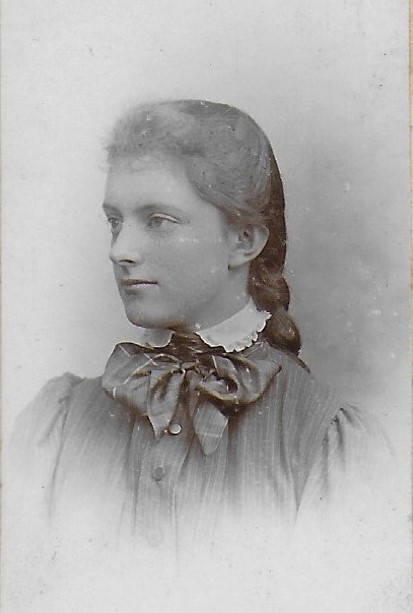
The Hoziers' happy life in France came to an end when Kitty, Clementine's eldest sister, contracted typhoid fever. To dedicate her full attention to Kitty's care, Blanche Hozier sent Clementine and her sister Nellie to Scotland. Sadly, Kitty died on 5 March 1900.
Clementine's education began at home, under the tutelage of a governess. She then briefly attended the Edinburgh school, which was run by Karl Fröbel, the nephew of the German educationist Friedrich Fröbel, and his wife Johanna. Later, she continued her studies at Berkhamsted School for Girls in Berkhamsted, Hertfordshire (now part of Berkhamsted School), and at the Sorbonne in Paris. She was twice secretly engaged to Sir Sidney Peel, who had fallen in love with her when she was 18.
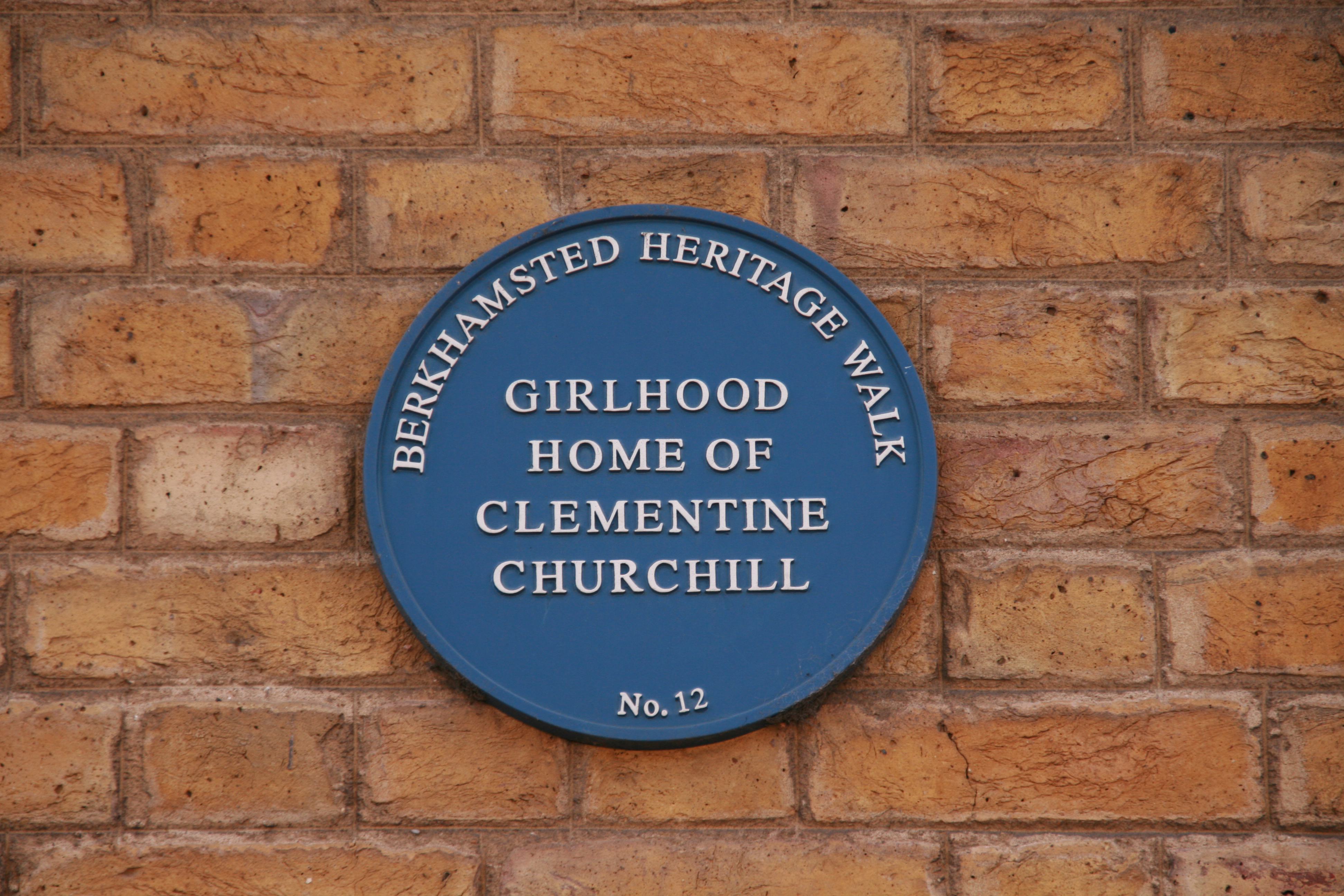
2. Marriage and children
This section details Clementine Churchill's significant personal life, focusing on her courtship and marriage to Winston Churchill, and their family life with their five children.
2.1. Meeting Winston and marriage
Clementine first met Winston Churchill in 1904 at a ball held in Crewe Hall, the residence of the Earl and Countess of Crewe. They reconnected in March 1908, finding themselves seated together at a dinner party hosted by Lady St Helier, a distant relative of Clementine. From their initial brief encounter, Winston had already noted Clementine's beauty and distinction. After an evening spent in her company, he came to appreciate her lively intelligence and strong character.
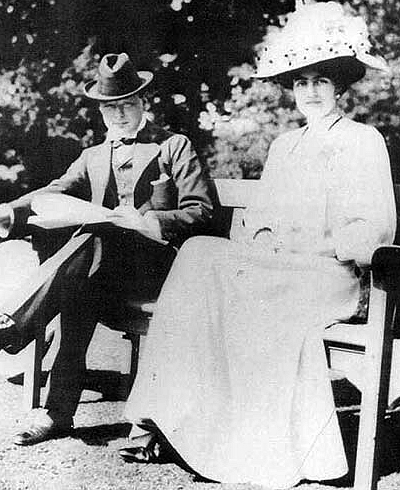
Following five months of social engagements and frequent correspondence, Winston proposed to Clementine on 11 August 1908, during a house party at Blenheim Palace. The proposal took place in a small summer house known as the Temple of Diana. Winston had also written a letter to Lady Blanche, Clementine's mother, to ask for her permission to marry, but ultimately decided to visit her in person, so the letter was never delivered. This letter is preserved in the memoirs written by their youngest daughter, Mary Soames.
Winston and Clementine were married on 12 September 1908, at St. Margaret's, Westminster. Winston, who was more than ten years her senior, was already an experienced Member of Parliament. The couple honeymooned in Baveno, Venice, and Veveří Castle in Moravia, before establishing their London home at 33 Eccleston Square.
2.2. Children
Winston and Clementine Churchill had five children. Their eldest was Diana (1909-1963), followed by Randolph (1911-1968), Sarah (1914-1982), Marigold (1918-1921), and their youngest, Mary (1922-2014). Of their children, only Mary lived to an advanced age, similar to her parents. Marigold tragically died at the age of two from sepsis, while Diana, Sarah, and Randolph all passed away in their 50s or 60s. Despite the significant stresses of public life, the Churchills' marriage was characterized by closeness and deep affection.
3. Activities and contributions
Clementine Churchill was a dedicated public figure, actively involved in various social and humanitarian causes, and provided steadfast support for her husband's political career, demonstrating her significant impact beyond her family role.
3.1. World War I activities
During the First World War, Clementine Churchill dedicated herself to organizing canteens for munitions workers in the North East Metropolitan Area of London. This initiative was undertaken on behalf of the YMCA. In recognition of her significant organizational work and contributions, she was appointed a Commander of the Order of the British Empire (CBE) in 1918.
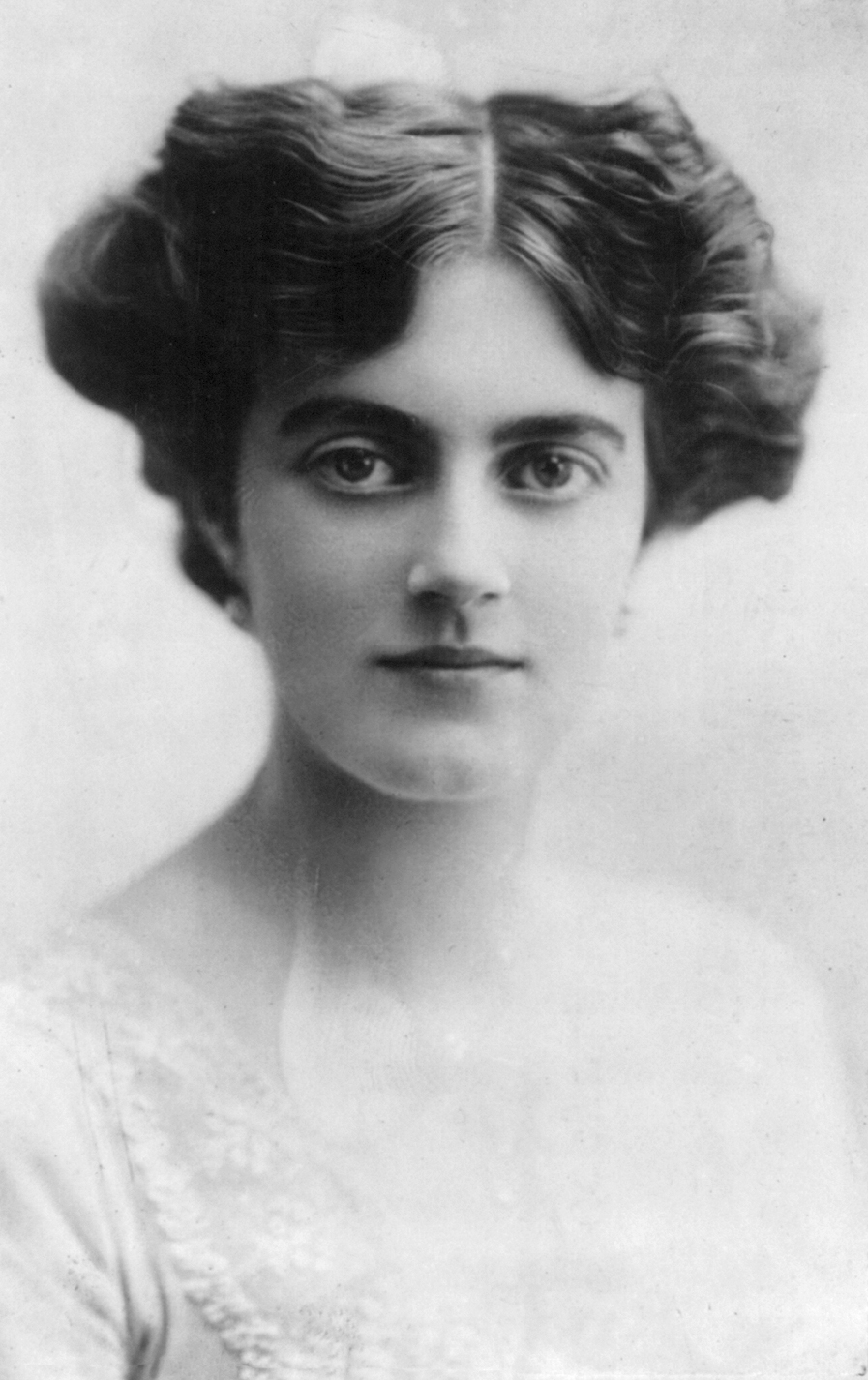
3.2. 1930s travels and personal life
In the 1930s, Clementine embarked on significant travels without Winston, sailing aboard Lord Moyne's yacht, the *Rosaura*. Her destinations included exotic islands such as Borneo, Sulawesi, the Moluccas, New Caledonia, and the New Hebrides. During this voyage, it was widely speculated that she had an affair with Terence Philip, a wealthy art dealer seven years her junior. However, no conclusive evidence has ever been produced to support this claim, and Philip himself was believed by many to have been homosexual. From this trip, Clementine brought back a Bali dove. After the bird's death, she buried it in the garden at Chartwell beneath a sundial, on the base of which she had inscribed a poem:
HERE LIES THE BALI DOVE
It does not do to wander
Too far from sober men.
But there's an island yonder,
I think of it again.
As the wife of a politician who frequently took controversial stances, Clementine was accustomed to being snubbed and treated rudely by the wives of other political figures. However, her patience had its limits. On one occasion, while traveling with Lord Moyne and his guests, the party was listening to a BBC broadcast in which a vehemently pro-appeasement politician criticized Winston by name. Vera, Lady Broughton, a guest of Moyne, audibly expressed her agreement with the criticism by saying "hear, hear"English. Clementine waited for her host to offer a conciliatory remark, but when none came, she indignantly returned to her cabin, wrote a note to Moyne, and began packing her bags. Lady Broughton came and pleaded with Clementine to stay, but Clementine refused to accept any apologies for the insult directed at her husband. She went ashore and sailed for home the following morning.
3.3. World War II and post-war activities
During the Second World War, Clementine Churchill undertook extensive charitable work. She served as Chairman of the Red Cross Aid to Russia Fund, President of the Young Women's Christian Association War Time Appeal, and Chairman of the Maternity Hospital for the Wives of Officers at Fulmer Chase. Towards the end of the war, she toured Russia, where she was awarded the Order of the Red Banner of Labour in recognition of her contributions.

In 1946, she was appointed Dame Grand Cross of the Order of the British Empire (GBE), officially becoming Dame Clementine Churchill GBE. Despite this, she sometimes continued to use the title "Mrs. Winston Churchill." Her post-war recognition also included honorary degrees from several prestigious institutions: the University of Glasgow, the University of Oxford (where her husband Winston also received an honorary degree), and the University of Bristol (which awarded her an honorary degree in 1976).
3.4. Support for husband's political career
Clementine Churchill played a crucial role in supporting her husband's extensive political career. She was actively involved in preparing his public appearances, including editing and rehearsing his speeches to ensure their effectiveness and clarity. Furthermore, she managed and attended high-level diplomatic summits alongside him, contributing to his public relations efforts and helping to navigate complex social challenges.
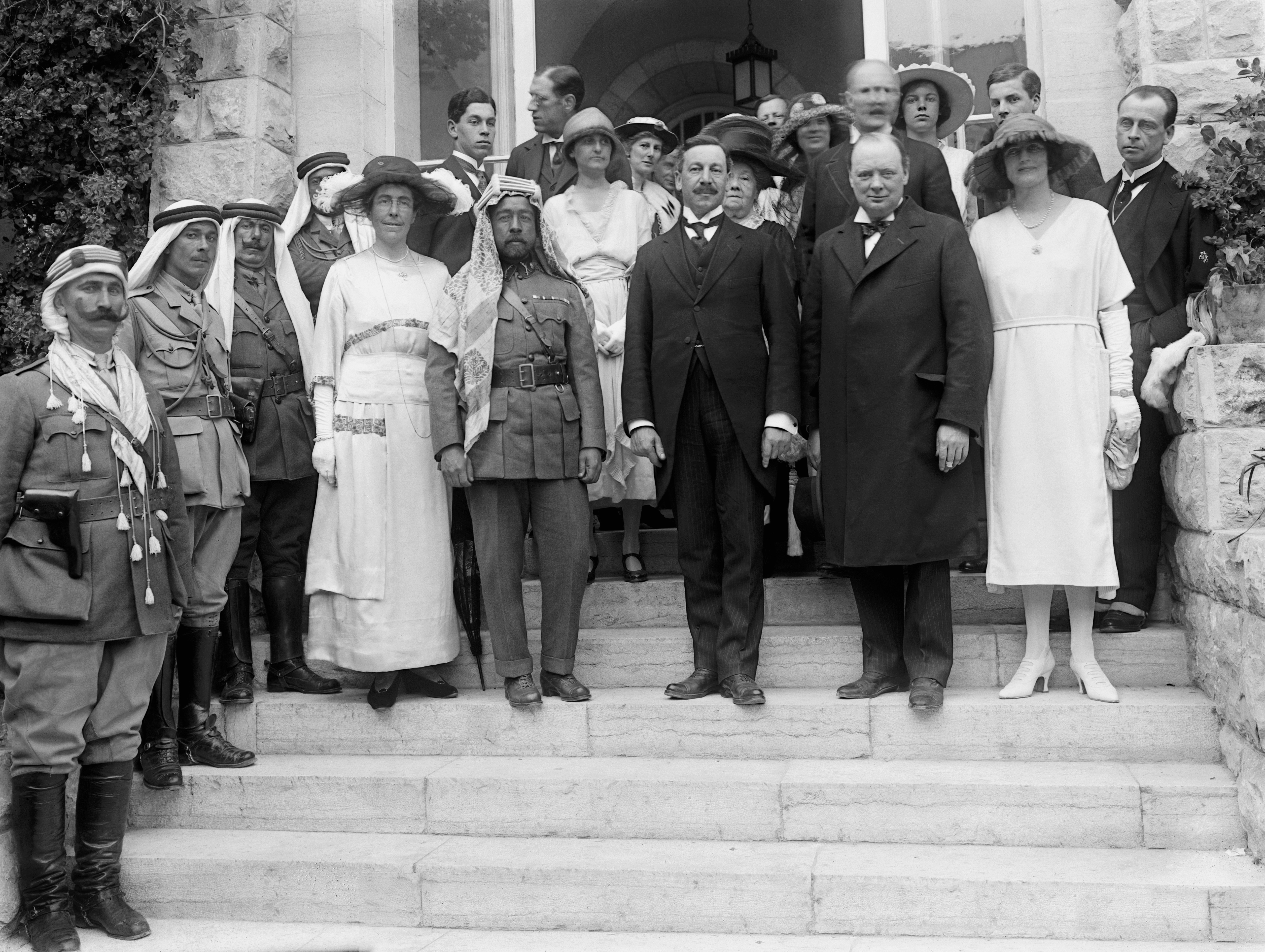
Her dedication extended to direct political campaigning; for instance, in 1922, she traveled to Dundee to campaign on behalf of her husband in the general election when he was incapacitated due to an appendectomy. Her efforts underscored her commitment to supporting democratic discourse and public service, making her an indispensable partner in Winston Churchill's political endeavors.
4. Later life and death
This section outlines Clementine Churchill's life after her husband's death, including her elevation to the peerage, her financial struggles, and the details surrounding her passing and final resting place.
4.1. Widowhood and peerage
After more than 56 years of marriage, Clementine Churchill was widowed on 24 January 1965, when her husband, Winston Churchill, died at the age of 90. Following his death, on 17 May 1965, she was elevated to a life peerage, becoming Baroness Spencer-Churchill, of Chartwell in the County of Kent. She took her seat in the House of Lords as a cross-bencher, an independent member. However, her increasing deafness significantly hindered her ability to participate regularly in parliamentary life.
4.2. Later years and financial situation
In her final years, Clementine faced considerable financial difficulties due to the combined pressures of inflation and rising expenses. To manage her finances, in early 1977, she resorted to selling five paintings by her late husband at auction. A notable revelation after her death was that she had personally destroyed the controversial portrait of her husband painted by Graham Sutherland, reportedly because Sir Winston himself had strongly disliked it.
4.3. Death and burial
Lady Spencer-Churchill died at her London residence, located at 7 Princes Gate, Knightsbridge, from a heart attack on 12 December 1977. She was 92 years old, having outlived her husband by nearly 13 years and three of her five children.
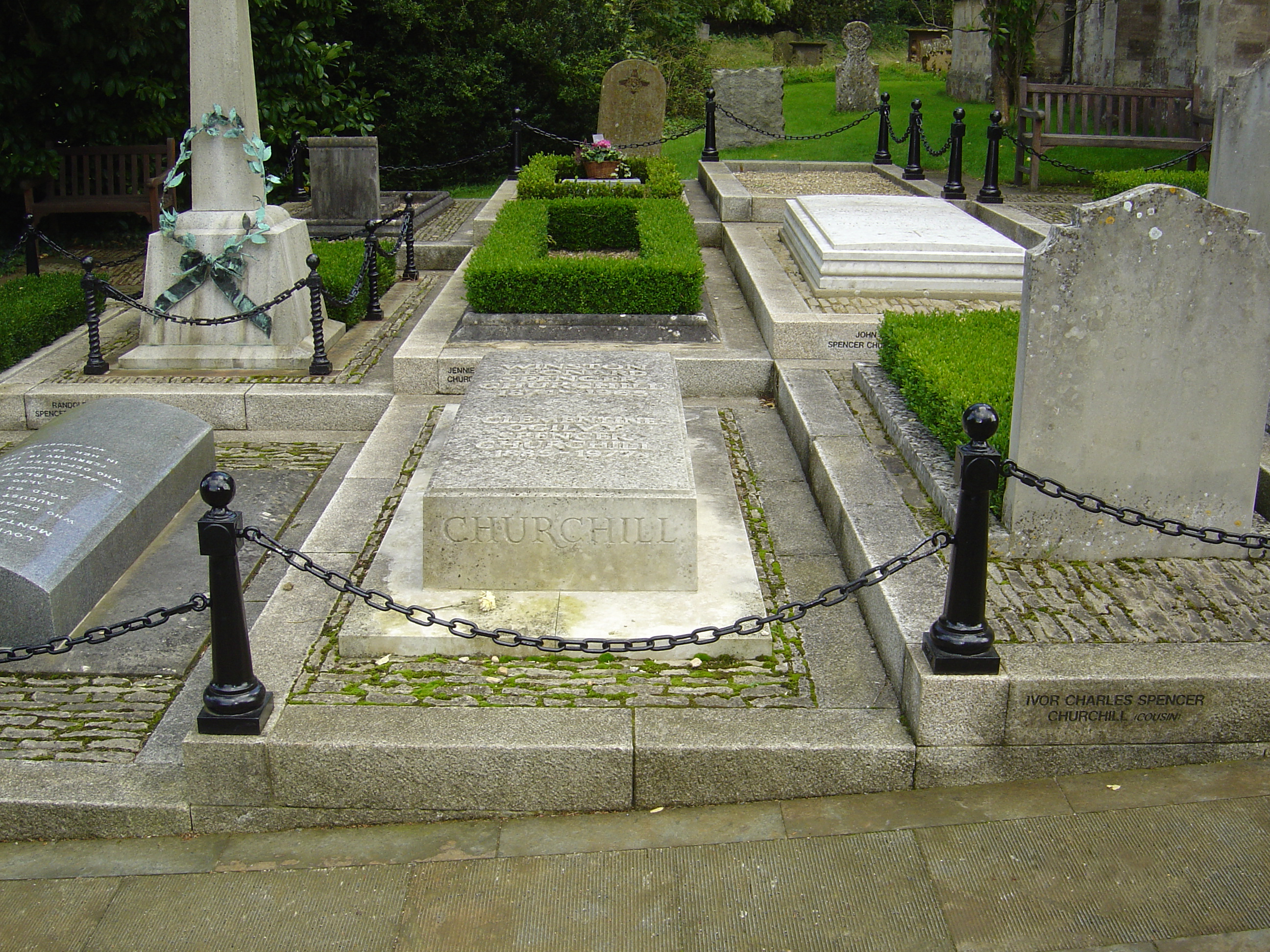
She is interred alongside her husband and children at St Martin's Church, Bladon, a parish church situated near Woodstock in Oxfordshire. Notably, her daughter Marigold, who had originally been buried at Kensal Green Cemetery in London, had her remains exhumed in 2019 for reburial with the family at Bladon.
5. Titles and honors
Clementine Churchill received numerous titles and honors throughout her life, reflecting her societal standing and contributions.
| Start Date | End Date | Title and Style | Reason |
|---|---|---|---|
| 1 April 1885 | 12 September 1908 | Miss Clementine Hozier | Born to Henry and Blanche Hozier |
| 12 September 1908 | 1918 | Mrs. Winston Churchill | Marriage to Winston Churchill |
| 1918 | 1946 | Mrs. Winston Churchill, CBE | Appointed Commander of the Order of the British Empire (CBE) |
| 1946 | 24 April 1953 | Dame Clementine Churchill, GBE | Appointed Dame Grand Cross of the Order of the British Empire (GBE) |
| 24 April 1953 | 17 May 1965 | Lady Churchill, GBE | Her husband, Winston Churchill, was appointed a Knight of the Garter |
| 17 May 1965 | 12 December 1977 | The Right Honourable The Baroness Spencer-Churchill, GBE | Created a life peer under the Life Peerages Act 1958 |
6. Assessment and impact
Clementine Churchill's legacy is preserved through various memorials and her portrayals in popular culture, highlighting her lasting influence.
6.1. Memorials and tributes
Several significant memorials and tributes honor Clementine Churchill's legacy. The Clementine Churchill Hospital in Harrow, Middlesex, is named after her.
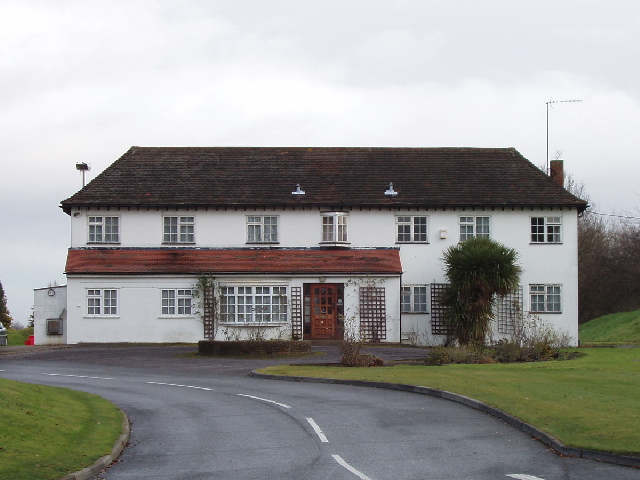
A commemorative plaque is affixed to the house in Berkhamsted where the young Clementine Hozier resided from 1900 to 1903 while attending Berkhamsted School for Girls. This plaque was unveiled on 17 October 1979 by her youngest daughter, Baroness Soames. A blue plaque also commemorates her residence at this location.
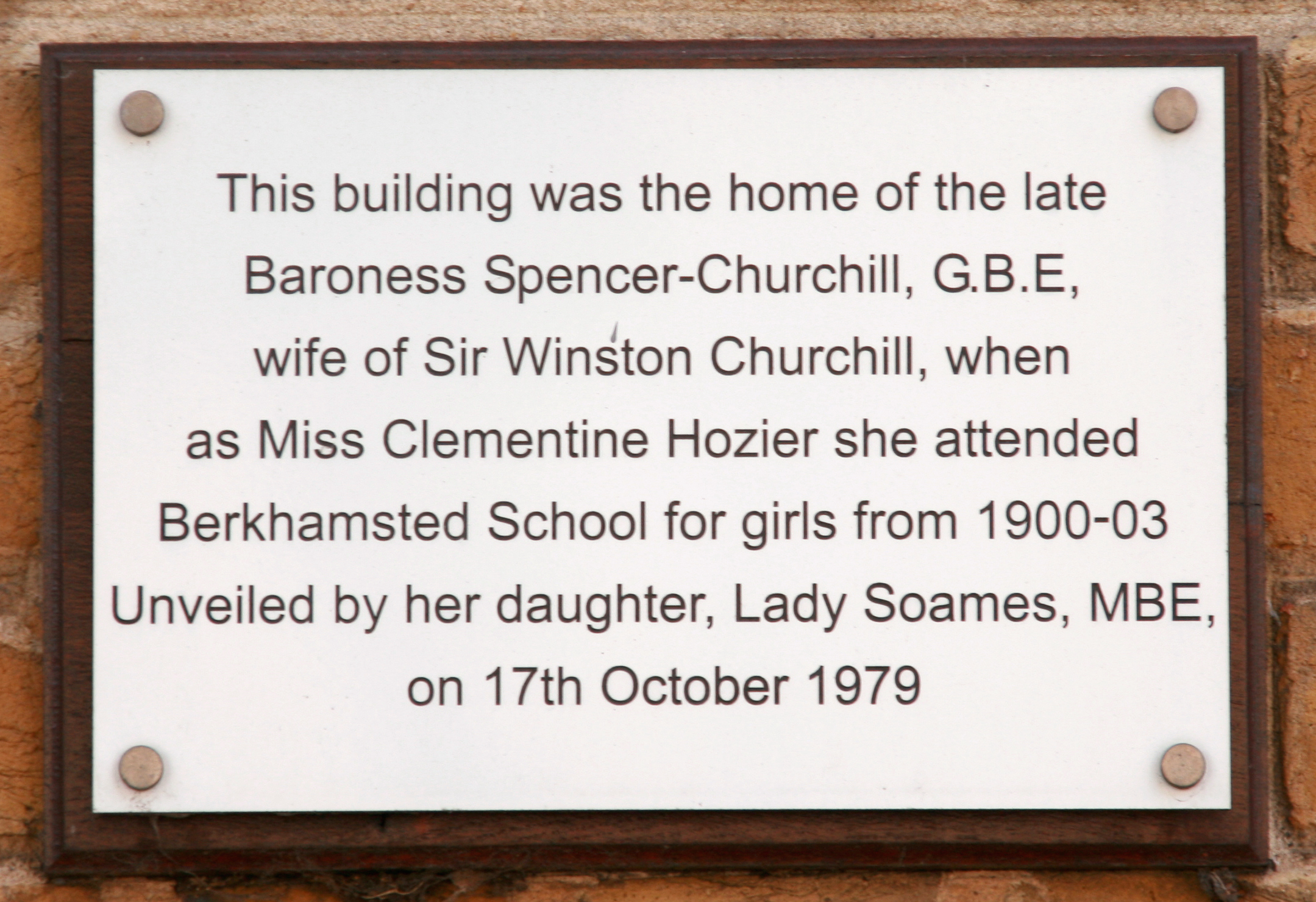
6.2. Depictions in popular culture
Clementine Churchill has been portrayed in various films, television series, and theatrical productions. She was depicted by Virginia McKenna in the 1974 television biopic The Gathering Storm, where she starred opposite Richard Burton. In 2002, Vanessa Redgrave took on the role in the biographical television movie The Gathering Storm. Dame Harriet Walter portrayed her in the first series of Peter Morgan's Netflix drama The Crown. More recently, Dame Kristin Scott Thomas played Clementine in the 2017 film Darkest Hour. Additionally, she was a character in Jack Thorne's 2023 play When Winston Went to War with the Wireless, performed by Laura Rogers.
7. Coat of arms
Clementine Churchill, as Baroness Spencer-Churchill, was granted a distinctive coat of arms. Her heraldic achievement features a coronet of a Baron. The escutcheon is quartered, reflecting her lineage and marriage:
- The first and fourth quarters represent the Churchill family: a sable field with a lion rampant argent, and on an argent canton, a cross gules.
- The second and third quarters represent the Spencer family: quarterly argent and gules, with an or fret in the second and third quarters, and over all, a sable bend charged with three escallops argent.
- Over all, in the center chief point, as an Honourable Augmentation, is an escutcheon argent charged with the Saint George's Cross, surmounted by another escutcheon azure charged with three fleur-de-lis or, arranged two and one.
- Finally, en surtout, an inescutcheon represents the Hozier family: vair, with a gules chevron charged with three bezants, and a chief gyronny or and sable.